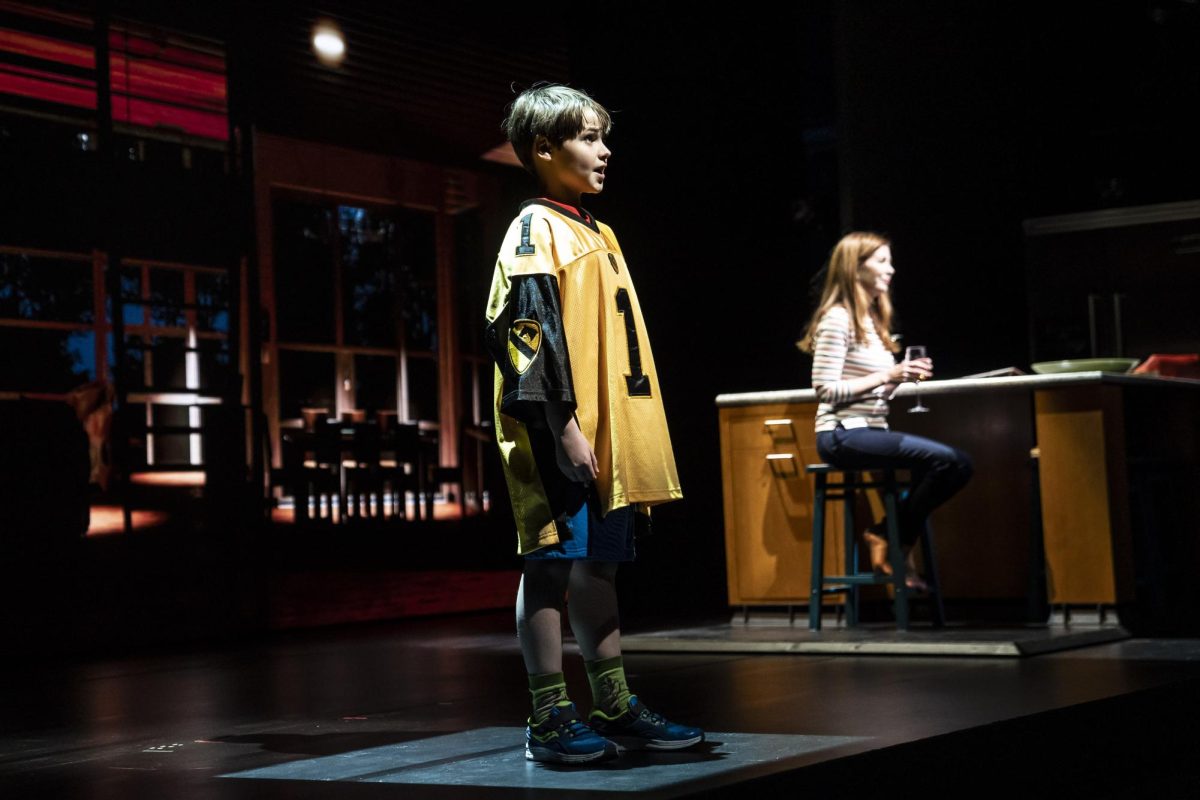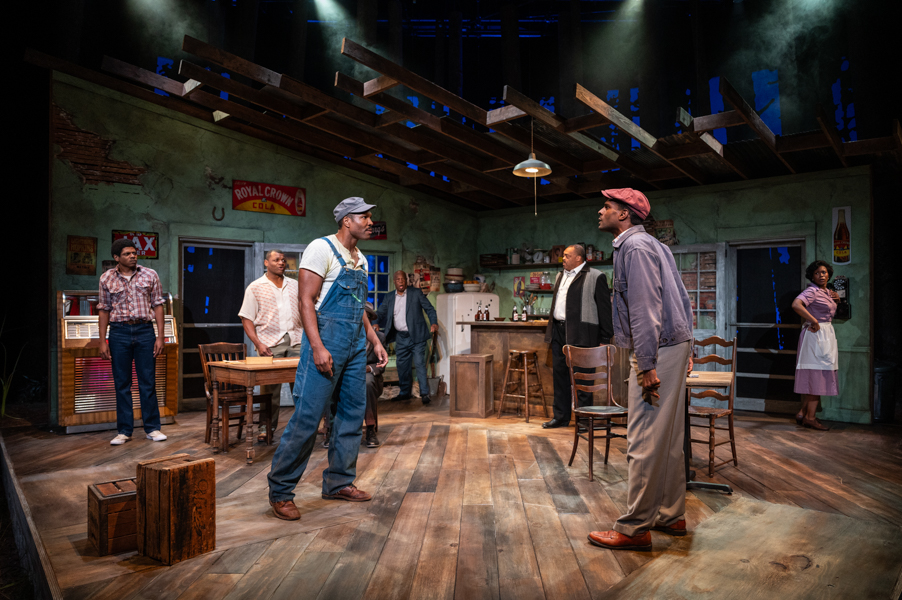The Goodman Theater’s riveting play Highway Patrol tells the story of a twisted relationship between a famous actress and a supposedly 13-year-old fan. Emmy Award-winner Dana Delany takes center stage as both the narrator and the main character, navigating a tale spun from her real-life tweets and DMs.
In the play, actress Dana Delany (playing herself) replies to the DMs of Cam, a fan who claims to be a young boy suffering from a bleak medical condition. Delany initiates daily conversations with Cam and the two update each other on their lives for months. However, as doubts and inexplicable details about Cam accumulate, it is revealed that 13-year-old Cam does not exist. The real person hiding behind the social media personality is in fact a middle-aged woman from Texas named Andy, who forged Cam as a fictional figure to attract sympathy and possibly develop a close relationship with the actress she is morbidly in love with.
From the onset, the play establishes a unique connection between Delany and the audience. Delany intermittently steps downstage from the main set, signifying a temporary removal from the setting and timeline of the plot, and addresses the audience directly. This narrative technique emphasizes Delany’s dual role as both herself and a character, the storyteller and the protagonist.
The play minimizes its use of digital screens, opting for characters to speak aloud and read tweets as spoken conversations, with the chirping sound effects of Twitter to serve as subtle reminders of the channel through which the characters communicate. Set elements, including Delany’s bed and her kitchen counter, slide on and off the stage each time the action changes locations. White text projected on a black screen far upstage gives the date and time: sets move across the stage, unnoticed in the dark, as the white text draws all of the audience’s attention.
A pivotal moment in the play comes with the revelation of Cam’s true identity: a scene meticulously crafted for maximum impact. Ominous background music foreshadows a looming predicament as half of the back screen is lifted, exposing a small room representing the supposed hospital room that Cam claims to be in. The remaining half of the screen shows the heart pulse of a sleeping Cam as a woman walks into the room, removes her wig, and makes her way slowly towards the bed, ultimately lying right next to Cam. Then the voices of the young boy and the creepy woman merge as the woman removes the plug of the breathing facility, orchestrating the metaphorical demise of the fictional, thirteen-year-old boy she fabricated. Cam turns out to be the creation of a woman named Andy, who works for the highway patrol and has concocted a false connection with Delany.
The success of this play is amplified by the performance of Delany, who brings authenticity to a story she has personally lived. In the last conversation she holds with the audience, Delany shares the aftermath of discovering Andy’s fraud and the emotional turmoil it caused. Delany’s revelation about her own struggles with love and acceptance offers an imperfect but poignant resolution, illuminating the vulnerability of a famous actress, or more importantly, a fallible individual, succumbing to deceitful manipulations.
The theme of vulnerability is exhaustively portrayed in Highway Patrol, a vulnerability magnified by the new dangers of the digital age. Delany’s personal, unpleasant encounter is living proof of how perilous and emotionally draining deceptive connections can be. The play interweaves the human desire for validation with the challenges of distinguishing reality from maliciously formulated fiction, leaving the audience lingering in contemplation of all that is displayed and shrouded by social media.








